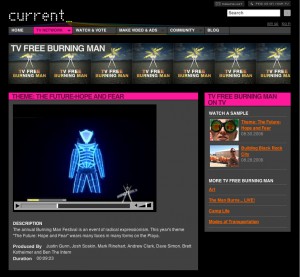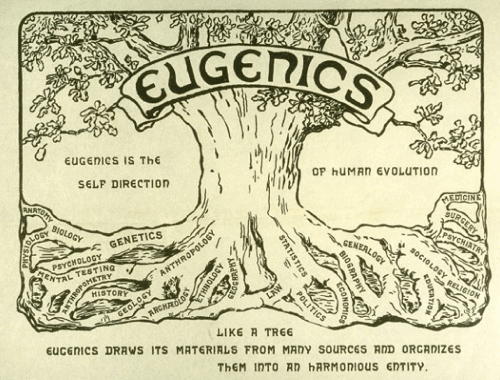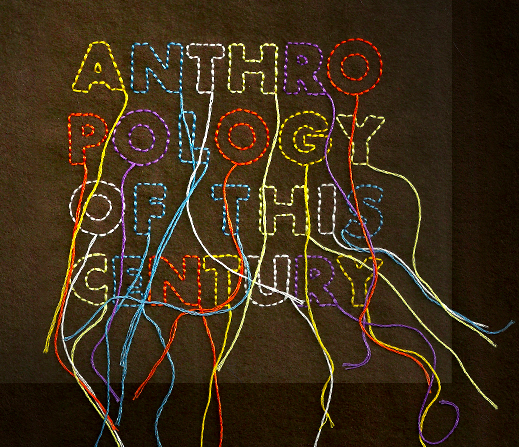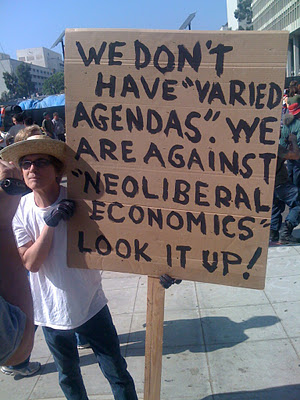The internet is translative boundary object for political thought, situated between four liberal ideologies about freedom and the state, corporation, individual, and the public. The internet is thus a parallax object, looking different from what ideological perspective one looks at it. Continue reading
Continue reading
Tag Archives: Websites
Surveilling your colleagues for fun and profit with Wunderkit
Facebook, Academia.edu, OpenAnthropology.org, ResearchGate — in a world full of social networking sites for social scientists, what is the point of registering for one more? In the past month or so I’ve had very good results using Wunderkit to surveil both my students and myself, and although the system is far from perfect, I think its useful enough to blog about for others who are interested.
Anthropology of this Century
I had the pleasure of interviewing Charles Stafford, Professor of Anthropology at the London School of Economics, about his new anthropology journal Anthropology of this Century. Click below to read the interview.
The Public Sphere of Occupy Wall Street
I keep returning to the public sphere as Habermas originally described it as I think about progressive political movements of today: Occupy Wall Street and its global dimensions, Anonymous and its more theatrical and political wing LulzSec, and progressive and independent cable television news network Current. Internet activism, television news punditry, and street-based social movements each work together implicitly or explicitly to constitute a larger public sphere. As scholars we need to resist the temptation of excluding one form of resistance as being inconsequential to social justice or to analysis and instead see all three as working together in a media ecology.
Is it just me or is the Scribd business model totally whacked out?
Someone tell me if I’m wrong, but isn’t the Scribd business model at least something like this:
- Encourage people to violate copyright by uploading whole scanned books to the Scribd website.
2a. Charge people money for downloading the pirated copies OR
2b. Give pirated copies away to people who upload additional pirated materials, making the treasure chest even more attractive to people who chose the 2a route
- Take down only those few PDFs publishers complain about
-
$$$!
Honestly, it seems like half of the things I search for in Google these days are links to Scribd documents. Its like Napster, if Napster was designed for European graduate students who waned to push the minor works of Deleuze into The Cloud.
I know there is a whole underground economy of PDF sharing that grad students and others engage in that I’m only beginning to understand, but how can Scribd be so brazenly out front on this one? Or am I missing something?
Jenny Don’t Change Your Number
Who is being marketed to in your neighborhood or in the communities you are studying? Enter a zip code and the Prizm market segmentation system returns five socio-economic types (out of a total of 67 possible types). What’s really fun are reading about all the different categories that the marketers have dreamt up. Here’s a flash video that provides a glimpse into how the data were generated and organized.
Here’s some PRIZM segments from my life’s geographies–
Where I currently live, Newport News, VA:
- Blue Chip Blues — a comfortable lifestyle for ethnically-diverse, young, sprawling families with well-paying blue-collar jobs
- Domestic Duos — a middle-class mix of mainly over-65 singles and married couples living in older suburban homes
- New Beginnings — households tend to have the modest living standards typical of transient apartment dwellers
- Park Bench Seniors — With modest educations and incomes, these residents maintain low-key, sedentary lifestyles. Theirs is one of the top-ranked segments for TV viewing, especially daytime soaps and game shows.
- Suburban Sprawl — they hold decent jobs, own older homes and condos, and pursue conservative versions of the American Dream
The field site for my dissertation, Cherokee, NC:
- Back Country Folks — residents tend to be poor, over 55 years old, and living in older, modest-sized homes and manufactured housing
- Bedrock America — With modest educations, sprawling families, and service jobs, many of these residents struggle to make ends meet. One quarter live in mobile homes. One in three haven’t finished high school.
- Blue Highways — the standout for lower-middle-class residents who live in isolated towns and farmsteads. Here, Boomer men like to hunt and fish; the women enjoy sewing and crafts, and everyone looks forward to going out to a country music concert
- Crossroads Villagers — a classic rural lifestyle. Residents are high school-educated, with downscale incomes and modest housing; one-quarter live in mobile homes.
- Shotguns and Pickups — scores near the top of all lifestyles for owning hunting rifles and pickup trucks. These Americans tend to be young, working-class couples with large families
Where my parents live, in a swanky part of Austin, TX:
- American Dreams — In these multilingual neighborhoods–one in ten speaks a language other than English–middle-aged immigrants and their children live in upper-middle-class comfort.
- Bohemian Mix — ethnically diverse, progressive mix of young singles, couples, and families ranging from students to professionals. In their funky row houses and apartments, Bohemian Mixers are the early adopters who are quick to check out the latest movie, nightclub, laptop, and microbrew.
- Money & Brains — high incomes, advanced degrees, and sophisticated tastes to match their credentials. Many of these city dwellers are married couples with few children who live in fashionable homes on small, manicured lots.
- Urban Achievers — the first stop for up-and-coming immigrants from Asia, South America, and Europe. These young singles, couples, and families are typically college-educated and ethnically diverse
- Young Digerati — Affluent, highly educated, and ethnically mixed, Young Digerati communities are typically filled with trendy apartments and condos, fitness clubs and clothing boutiques, casual restaurants and all types of bars
I read about this first in the librarian blog/ webcomic, Shelf Check, a must read for anyone who harbors a secret crush on librarying. Posey writes that she saw it first in Lifehacker.
TV Free Burning Man
Next week as many as 50,000 people will inhabit Black Rock City, a temporary metropole constructed by volunteers for a week of personal expression and community celebration on the barren alkaline plains of a Nevada desert a half-days drive from Silicon Valley. This is Burning Man, a radically participatory event where a lot of people who labor in the digital creative industries work out collaborative utopias that make their way–the theory goes–into the social networking software and platforms they make and ask us to populate with our creative surplus, communal energy, and visually expressive humanity. The techno-culture historian Fred Turner states that Burning Man is a ‘sociotechnical commons’—the cultural infrastructure for the digital media industries of California. This is an attempt to document how and why Burning Man is a “proof of concept,” “beta test,” and practical experiment for the engineering of networked publics.

Current’s first idea about content producers was not to crowdsource content through the VC2 program. They didn’t intend to mine the producing audience for TV-caliber video submissions. Current originally planned to hire 20-30 digital correspondents to travel the world making content. A Current employee related to me how the programming executives, fresh from recent excursions to Burning Man in the early 2000s, used the open participatory model of Burning Man to argue against the exclusivity of the digital correspondent model by asking, “like Burning Man, why wouldn’t we let everybody in who wants to participate?” That spirit carried into the creation the VC2, a project to empower any amateur documentary producer to make content for television. This was the impetus behind the first user-generated television network.
From 2005-2008 Current’s website was www.current.tv. It was a space dedicated to VC2 producers to upload and critique short documentaries. In 2008, upper management decided that this was too elitist and they wanted more traffic so they put together a group of marketers, engineers, and creative executives to envision the new website, current.com. One of those creative executives, Justin Gunn, went into the first meeting to brainstorm current.com and
…hung up a map of Burning Man and I took an astronomy magazine and cut out pictures of stars and star clusters, and galaxies and galaxy clusters, and superclusters really beautiful Hubble imagery and positioned it around the Burning Man map and I looked at [my colleagues] and said, ‘that is what we are going to make.’ And they said,’ what is that?’ And I said, ‘OK, work with me here. We are going to start with the organizational principle of Burning Man, it is a very light, lean organization. I could be wrong here but there is something like 12 full-time employees around the year everything else is all volunteer labor. But they build the structure, they set the rules, they define the parameters and then they invite anyone, anyone to come and do whatever they want as long as they stay within the confines, abide by the rules, and follow the predetermined parameters—they can do whatever they want.’…You start with an organization principle, a framework, here is how this thing works, here is the lattice, but it is empty, we will do a few key things, and we will invite anybody in as long as they abide by the rules and play within the framework, they can build whatever they want. So the constellations and star clusters were meant to represent constellations of information.
Using celestially graphic metaphors for the digitally engaged public they hoped to network together Gunn sought to inspire his co-workers to make a system as open and empty–and as charged with possibility–as the desert of Black Rock before the gates of Burning Man swing wide.
Using their shared interests in participatory community, self expression, and technology as a platform for dialogue–as well as their proximal offices mere blocks from each other in the Silicon Valley outpost of SoMa in San Francisco– producers at Current and organizers of Burning Man began to scheme about a more dynamic relationship. TV Free Burning Man was a result. Combining professional and amateur field production with a televisual aesthetic of first person documentaries and tone poems, the for profit mass media television firm Current produced content live from the playa for four years, 2005-2008. Considering Burning Man’s imperative to avoid all forms of commercialization and the strict media permitting process to even use a still camera at Burning Man, TV Free Burning Man is a testament to the shared ideals and aesthetics of Current and Burning Man.
——————————–
I’ve attempted to link an outrageous event to important technological and economic digital systems used by billions of humans. The goal is to see how internet practices in virtual spaces are coconstituted by actual world practices in material spaces. Savage Mind writer Rex coolly said CEO Mark Zuckerberg’s goal with Facebook is to “scaffold” sociality–strap supportive beams to the human-to-human communication network that presently exists or might not exist without the structured arena. Rex has it right. Social media and social events, like the virtual and the actual, are coconstructed. And yet, something still trumps this transcendence of body-mind duality.
The commercial imperative looms over the users of corporately-made social media just as the end of the week at Black Rock City haunts the freedom-accustomed Burner. In a series of moves, Current has increasingly pulled back from their mission to democratize media production. In a tense economy and with venture capitalist money running thin, Current has moved to capitalize on its major asset, its cable license, through abandoning the VC2 program and relying on traditional professional programming.
Burning Man, on the other hand, remains a valiant, excessive, and privileged materialization of the ideal sociality coded into and by internet culture. Last year around this time I wrote about the emerging tourism industry in Black Rock City, But for now, the Black Rock Foundation does a tremendous job with a skeleton staff, grants art funds to hundreds of artists, and facilitates a relatively commercial free environment. As a non-profit with a seasonal ecstatic event, Burning Man has an easier job than Current of retaining its mission, a for-profit firm in a fiercely competitive TV market responsible for 24 hours of programming 365 days a year.
Openness, liberation, transparency, relativity, democracy, trust, non-privacy, and collaboration are the shared origin myths of the activists and planners of the internet and Burning Man. These ideals are coded into digital architecture in Silicon Valley and other areas around the Black Rock Desert and distributed for free use throughout the world. These digital social systems and event organizations are molded by their missions and driven by the necessity to optimize the growth of their organizations. Every ideal has a shelf life cut short usually by the profit necessity. The compromises to the mission that commercialization requires are the instances to monitor when adjudicating the sustainability of the social entrepreneurship model.
Side by Side
Side by Side is a blog about practices of collaborative art and ethnography – that is using creative methods (such as photography, video, writing, visual art) to represent community and cultural stories in a collaborative way.
Cultural Anthropology’s Virtual Issue on Business Cultures
Cultural Anthropology’s ambitious website has not been as successful as some might have hoped — it’s forums are dusty (to say the least) and the ‘SuppleMentals’ section is not only an underused attempt to add multimedia links to supplement print articles, it employs that tired old ‘I capitalized something to make a pun! Get it?!’ styles of tired 80s avant-gardism that only James Boon still thinks is charming. That said, however, their decision to publish a ‘virtual issue‘ on business cultures is both extremely welcome and extremely interesting. Having unfairly mocked the stylistics of the website, I will save you rant about how anthropology’s recent turn to the study of ‘business cultures’ is problematic for the way it construes predecessors and fails to make possible interdisciplinary connections (you can read my article later on this later if it ever comes out), and move on to praise CA for making this material available and prompting us to think about what digital anthologizing might mean or signal.
The basic idea is simple. CA creates a web page with links to five articles written between 2009 and 2003 which are all thematically related. The articles are open access (huzzah!), and the web page includes a brief editorial introduction and a link to other articles which are related but which did not, apparently, make the cut.
Now, the idea of anthologizing greatest hits from a journal in order to present a picture of the past that enables research in the future is not a new idea. Colonialism and Culture collected several classic history/colonialism/power papers from Comparative Studies in Society and History, there is a three volume collection of papers from American Anthropologist, and Ethnos (I think it was) also did an edited volume of its political anthropology articles. Sage specializes in bookifying special issues of journals (such as Studying Elites Using Qualitative Methods, a volume which is, sadly, largely off the radar of the new business anthropology) and the line between journal, conference, and anthology has become so tenuous over at Theory, Culture, and Society that they seem at times officially Beyond Genre.
But what is so new and interesting about CA is exactly the fact they they are not publishing this as a physical book. It is easy to see why — in an era of proliferating PDFs the value of physically collocating these essays has sharply declines (and remember, it used to be quite a value). CA is adding value to their work by selectively filtering it and, of course, making it available to everyone. What does it mean to anthologize merely by linking? It’s a fascinating question.
First, it makes us start to see the similarities between the edited volume and other genres that we might not have understood as being related to it. Is this a digital anthology or a syllabus? Is it an edited volume or a reading list? Is it a web site or a course reader? Syllabi, readers, and reading lists create usable pasts for students, while edited volumes are often authoritative presentations of work which in turn spawns new work. I guess I’ve always understood that both of these involve renarrating the past to move into the future, but here the similarities are especially striking.
Second: Because it is all links all the way down, there is no reason that CA had to stick merely with CA articles. Why not create a more wide-ranging edited volume? There are issues of rights, of course, as well as the problem of where you stop looking once your purview stops being just one journal and becomes an entire InterNetoSphere. It may be that legal regimes and our own imaginations result in us retaining the ghostly spectre of a physical journal issue in our heads as we imagine anthologization.
Thirdly, of course, is the fact that this is great for CA’s ‘brand’. Open Access means better publicity, and intelligent filtering (the selection of articles is great) mean that CA gets the credit not just for publishing these papers, but for wrapping them up in a nice little package for you. And of course in the future when people cite Mazarella and Ho with religious reverence as founders of The New Thing, CA can say “we were there first”.
At any rate, despite my snarkiness, I think CA has done something really useful and thought provoking, and I’d encourage you to check it out — and who knows, maybe even breathe some life into the forums.
Twitter Time.es: Anthropology Edition
I’ve mentioned before that I maintain a list of anthropologists on Twitter.* Now that list has become a means of collaboratively editing a constantly updated online newspaper, thanks to the website Twitter Tim.es. I’m relying entirely upon Twitter Tim.es to make this list from our tweets, but I strongly recommend taking a look at Digital Humanities Now which is a very nice website built around a similar concept.
What this means is that if you are on the anthropologists on twitter list and you tweet a link to a news story, you are essentially voting for that story to appear on the front page of the Twitter Tim.es page. Because the list is still small, it only takes a couple of votes, but hopefully as more anthropologists join Twitter it will become even more focused on anthropological topics.
*All are welcome to join the list, but I do ask that at least 1/3rd of your tweets be in English, and that you regularly tweet about matters concerning anthropology. If you’d like to be on the list, just send me a tweet @kerim.
Let’s give it up for the AAA blog
I’d like to think the reason I am so critical of our professional organization is not that I am some sort of curmudgeon, but because it so often fails to get anything right. In the spirit of giving credit where credit is due, therefore, I think it is high time that we give it up for the American Anthropological Association’s ‘new’ blog: The AAA Blog. After an initial proliferation of blogs — I think the AAA created a separate blog for each post it wanted to make — the new consolidated blog has really gotten off the ground. The blog manages to balance institutional boilerplate with more heartfelt commemoration of events in our disciplinary history, along with everything in between. Its not a place where you go to be provoked or shocked (Maximilian Forte is still fighting the good fight on that end of things), but it has managed to successfully put a face on our discipline’s professional organization that is both respectable and not boring: they track the appointment of AAA members to prestigious positions, they have a flickr photo stream of Indigenous Children In Authentic Textiles playing with iphones and laptops, announce grants, and so forth. Its an important niche in the anthropology noosphere that has finally been filled. So let’s give it up for the AAA blog — good job folks!
Janice Harper and the Public Intellectual
My good friend Eric Ross (author of the classic The Malthus Factor; check out his awesome essay in my book Anthropology at the Dawn of the Cold War) wrote a lengthy analysis of the Janice Harper affair in the Porcupine, his online political analysis magazine, focusing on the University’s shoddy record with female professors and the age-old fix public intellectuals find themselves in again and again.
Why Janice Harper? Largely, I think, because she is a woman who happened to believe in real gender equality in an especially backward university setting. But, Lesley Sharp also implicitly predicted what would happen when she wrote, in her review, that “Harper pulls no punches.” The critical research that Janice has done on unpopular subjects is the hallmark of her intellectual integrity, of what we need most from academics.
Read the whole thing at The Porcupine – and while you’re there, check out the rest of the material on offer from Eric and his stable of radical-leaning writers.
Current and Past Adaptive Lifeways of the Proprietor
It is not that easy to track down, but James Fernandez’s homepage is definitely worth checking out. Fernandez is, of course, an extremely well-known anthropologist with a long history of writing about anthropology, tropes, humanism, metaphor, and much more. The site’s circa-1994 layout has a sort of nostalgic charm to it — as if you’re viewing it in your brand new Mosaic browser, and it features a mix of high academic formality combined with Fernandez’s own impish playfulness. Best of all, it has content. The site includes not only offprints of much of Fernandez’s writings, but also a great deal of the imponderabilia of his everyday life — Christmas cards, pieces for his alumni magazine, and (above all) really, really amazing syllabi. The entire thing is deeply evocative of the life of a professor, from personally chosen favorite pieces to starch-collar descriptions of The Life Course Of The Proprietor. Not everyone will be moved by Fernandez’s mode of ethnographic thought, but as an example how/what a personal website can be, and particularly one for an emeritus professor who was not exactly weaned on tweets, it is certainly worth a look.
Congratulations on 5 Years of Antropologi.info!
We here at Savage Minds would like to extend our heartfelt congratulations to one of the pioneers of anthropology blogging, Lorenz Khazaleh, on 5 years of Antropologi.info!
Eugenics Image Archive

Over at BoingBoing Carrie McLaren points us to the Image Archive on the American Eugenics Movement. Despite its annoying flash-based interface, the site is a useful resource.
It’s hard to believe eugenics was as popular here as it in fact was without seeing the visual evidence. The images here include Fitter Family contests, where white Americans competed at state fairs–much like cattle–to determine who had the best breeding. (Make sure to check out this traveling exhibit.) Also, lots of documents and flyers linking criminality to immigrants and heredity. (Oh, the irony of using the swastika to indicate the racial inferiority of Germans!) The interface is pretty clunky but it’s worth pecking around.
For background on the early 20th century American eugenics movement, you could do worse than [Carrie’s] interview with historian Daniel Kevles.

